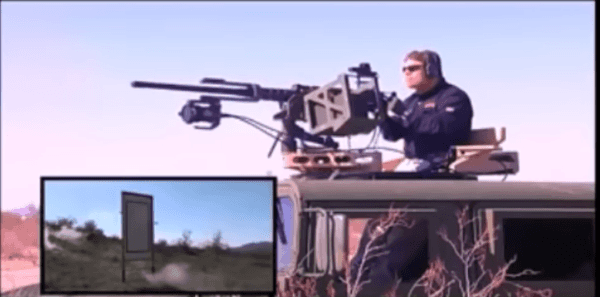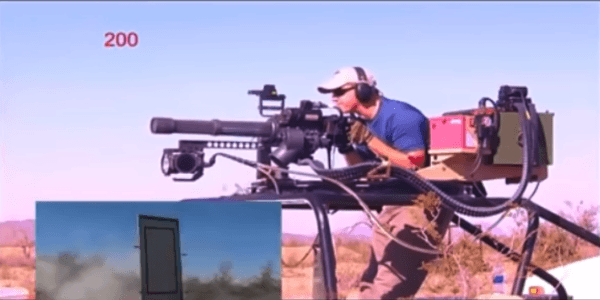Machine guns have been around since the mid-19th century with the invention of the 1862 Gatling gun by Dr. Richard Jordan Gatling, which was adopted by the U.S. Navy. Around the same period and created by the same man, the modern minigun was made in the 1860s. Dr. Gatling replaced the hand-cranked mechanism of a rifle-caliber Gatling gun with an electric motor, a relatively new invention at the time. Although “minigun” refers to a specific model of weapon that General Electric originally produced, the term “minigun” has come to refer to any externally-powered Gatling gun of rifle caliber.

(ArmedForcesUpdate/YouTube)
The modern minigun features Gatling-style rotating barrels with an external power source, normally an electric motor. The “mini” in the name is in comparison to designs that use a similar firing mechanism but larger shells, such as 20-millimeter M61 Vulcan, and “gun” for a caliber size smaller than that of a cannon, typically 20-mm and higher.
This video shows the effectiveness of the minigun compared to the machine gun by measuring the hit probability from different ranges with both guns. It compares the M2 heavy barrel 50 caliber and the M134 D minigun. Both are mounted on a Humvee based at distances of 300 meters, 500 meters, 750 meters, and 1,000 meters. Each gun is fitted with an optical site based on the range of distance.
Check it out in the video below:
The target being used is a standard 8×4 target with a 6×3 area marked off as the kill zone. The gunners will treat it as if it is a moving target. Each weapon is given four seconds to fire, which is controlled by the amount of ammunition. The 50 caliber fires 550 shots per minute or 9.1 rounds per second. The M134 D fires 3,000 shots per minute or 200 rounds in four seconds.
The first test is the .50 caliber at 300 meters. In 40 seconds, it got just three hits. The M134 D minigun is up next also at 300 meters. It got a total of 87 hits. Now the .50 caliber at 500 meters and it gets just one hit in the zone. The minigun at the same distance of 500 meters gets 35 hits.

Military Mini Gun vs Machine Gun (ArmedForcesUpdate/YouTube)
Time to fire the .50 caliber at 750 meters. Again, just one hit. The M134 D minigun at 750 meters results in 10 hits.
What can the.50 caliber do at 1,000 meters in a slow fire to try and improve accuracy? The result here is zero hits. Not looking good. The M134 D minigun at the same distance of 1,000 meters results in 10 hits.
At all distances, the M134 D minigun outperformed the .50 caliber, hands down.



